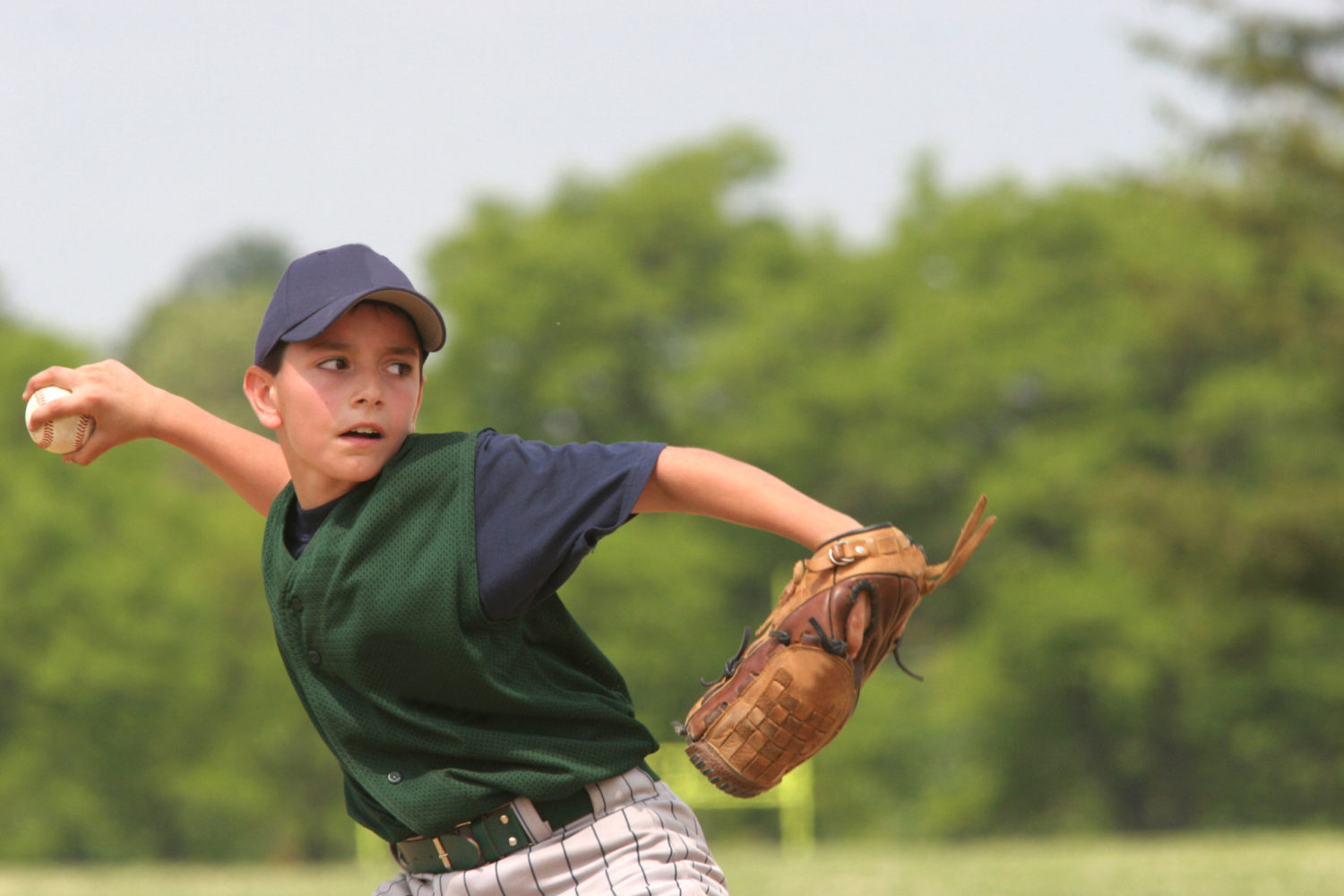
Approximately, 3-4 million children and adolescence between the ages of 4 and 17 participate in organized baseball throughout the country. Many of these young athletes develop elbow and/or shoulder pain commonly seen in physical therapy clinics and orthopedic surgeon’s offices throughout the country.
Major League Baseball and USA Baseball have teamed up to educate and help prevent baseball injuries through Pitch Smart, a resource for safe pitching practices (PitchSmart.com). Pitch Smart uses current research and guidelines from the American Sports Medicine Institute (ASMI) to guide coaches and parents to keep our kids safe.
Common Guidelines to help protect pitchers from shoulder and elbow injuries:
Don’t throw too much. Daily, weekly and annual overuse is the greatest risk to a pitcher’s arm health. Numerous studies have shown that pitchers who throw more pitches per game and those who do not adequately rest between appearances are at an elevated risk of injury. While medical research does not identify optimal pitch counts, pitch count programs have been shown to reduce the risk of shoulder and elbow injury in Little League Baseball by as much as 50% (Little League, 2011). The most important thing is to set limits for a pitcher and stick with them throughout the season. (ASMI)
Don’t pitch through arm fatigue. Individuals are 36 times more likely to develop shoulder and elbow injuries when routinely pitching with arm fatigue. (ASMI)
Don’t pitch more than 100 innings per year. If an athlete throws over 100 innings they are 3.5 times more likely to be injured than those who did not exceed 100 innings pitched. (ASMI)
Don’t throw more than 8 months per year. Athletes who throw > 8 months per year are 5 times as likely to suffer an injury requiring surgery of the elbow or shoulder. Pitchers should refrain from throwing for at least 2-3 months per year and avoid competitive pitching for at least 4 months per year.
Don’t pitch on consecutive days. Pitchers who pitch on consecutive days have more than 2.5 times greater risk of experiencing arm pain. (ASMI)
Don’t play on multiple teams at the same time. There is increased risk of injury due to the difficulty in monitoring pitch limits and rest time. If the player is on multiple teams, make meticulous efforts to keep track of the amount of pitches thrown to allow adequate rest.
Don’t forget the elbow, shoulder, and core in strength and conditioning programs. Numerous studies have shown that deficits in upper extremity strength and mobility are strongly correlated to serious arm injuries. Legs, core, shoulder and forearm exercises can build strength, endurance and motor control which can prevent injury.
Be cautious of playing catcher following pitching. If the player catches following pitching they are 2.7 times more likely to suffer a major arm injury. This will be dependent on the how many pitches thrown and the fatigue of the player.
Be cautious of throwing your hardest fastball often. There is 10% more stress on the elbow and shoulder when throwing a fastball compared to the curveball or slider. As one would expect, the lowest force generator was the change-up, approximately 3-5% less than the curveball or slider. (Orthop J Sports Med. 2013) The bottom line should always be, learn to throw strikes first with less concentration on velocity and more emphasis on proper development of pitch mechanics and arm control in a variety of speeds thereby reducing the stress on the arm. Once there is a strong command of the strike zone a curveball and change-up can be added.
Be cautious with the radar gun. Radar guns do not directly cause harm to a pitcher, however, the gun may cause the pitcher to over throw beyond their normal comfort level. This could possibly create arm strain.
Follow pitch counts versus innings. Following pitch counts can reduce arm injuries by as much as 50%. Inning limitations can be misleading causing the pitcher to actually throw more not less. An inning can be as little as 3 pitches or what the coach will allow.
Following these guidelines may keep the throwing athlete safe from the debilitating shoulder and elbow injuries seen on a regular basis in physical therapy clinics.
For more articles check out our website mishock.wpengine.com.
